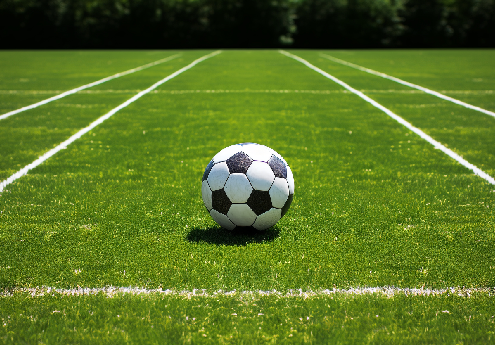
- Afrikaans
- Arabic
- Belarusian
- Bengali
- Czech
- Danish
- Dutch
- English
- Esperanto
- Estonian
- Finnish
- French
- German
- Greek
- Hindi
- Hungarian
- Icelandic
- Indonesian
- irish
- Italian
- Japanese
- kazakh
- Rwandese
- Korean
- Kyrgyz
- Lao
- Latin
- Latvian
- Malay
- Mongolian
- Myanmar
- Norwegian
- Persian
- Polish
- Portuguese
- Romanian
- Russian
- Serbian
- Spanish
- Swedish
- Tagalog
- Tajik
- Thai
- Turkish
- Turkmen
- Ukrainian
- Urdu
- Uighur
- Uzbek
- Vietnamese
artificial grass in football stadiums
Nov . 16, 2024 22:00 Back to list
The Rise of Artificial Grass in Football Stadiums
In recent decades, the landscape of sports has undergone significant transformations, particularly in the realm of football. One of the most noteworthy changes has been the widespread adoption of artificial grass in football stadiums. This transition brings with it a host of advantages, both for players and for the management of sports facilities.
Enhanced Playing Conditions
One of the primary reasons for the shift towards artificial grass is the improvement in playing conditions. Natural grass surfaces can often be inconsistent, affected by weather conditions, wear and tear, and insufficient maintenance. Rain can lead to muddy pitches, causing injuries or impacting the flow of the game. Artificial grass, on the other hand, provides a reliable and consistent playing surface. It ensures that games can occur in various weather conditions, minimizing the chances of delays or cancellations.
Moreover, technological advancements in manufacturing artificial turf have led to the creation of surfaces that closely mimic natural grass. Modern synthetic pitches feature advanced materials that offer better resilience and comfort. Players can enjoy enhanced traction, reduced slipping, and a more uniform playing experience, making the game safer and more enjoyable.
Cost-Effectiveness and Maintenance
The economic considerations associated with maintaining a sports facility cannot be overlooked. Traditional grass pitches require regular maintenance, including watering, mowing, aeration, and fertilization. These ongoing costs can add up significantly over time. In contrast, artificial grass substantially reduces maintenance expenses. While the initial installation cost can be higher, the long-term savings on maintenance make it an attractive option for football clubs and stadiums.
Artificial turf requires minimal upkeep—occasional cleaning and infill replenishment are usually sufficient. This efficiency not only alleviates the burden on facility managers but also allows them to allocate resources effectively to other areas of the stadium.
Year-Round Usage
artificial grass in football stadiums

The versatility of artificial grass extends beyond just football. Many stadiums that have made the switch are able to host multiple events, such as concerts, community events, and other sports. This multi-functionality maximizes the use of the facilities, generating additional revenue streams.
Natural grass typically goes dormant during colder months, limiting its usability. However, synthetic turf can withstand colder climates and is less impacted by seasonal changes. This allows clubs to schedule more games throughout the year, enhancing fan engagement and creating additional revenue opportunities.
Player Welfare and Performance
Advocates of artificial grass emphasize the potential benefits for player welfare and performance. Studies have indicated that modern artificial pitches can reduce the incidence of certain injuries. For instance, the shock absorption properties of certain types of synthetic turf can diminish the risks associated with hard ground surfaces, particularly for high-impact sports like football.
However, it's essential to acknowledge the criticisms surrounding artificial grass. Some players argue that synthetic surfaces can lead to different types of injuries, such as abrasions and joint discomfort. As with any technology, the key lies in the quality of the material and design. The best artificial grass systems are continuously being tested and refined to mitigate these concerns.
The Future of Artificial Grass in Football
As technology continues to advance, the future of artificial grass in football stadiums looks promising. New innovations are constantly emerging, addressing previous criticisms and enhancing player experiences. As clubs around the world seek to improve sustainability and economic viability, the adoption of artificial grass is likely to become even more prevalent.
In conclusion, the transition to artificial grass in football stadiums reflects a broader trend in sports towards enhancing playability, managing costs, and improving overall efficiency. While there are valid concerns regarding player welfare and experience, the advancements in synthetic turf technology present an encouraging future. As clubs and fans alike embrace these changes, it is essential to continue dialogue between stakeholders to ensure that the evolution of football remains player-focused and enhances the beautiful game for generations to come.
-
The Benefits of Artificial Turf for Indoors
NewsJul.15,2025
-
How Artificial Grass Suppliers Ensure Quality Products
NewsJul.15,2025
-
Artificial Grass and Pets: A Space for Relaxation
NewsJul.08,2025
-
Balcony & Outdoor Decoration with Artificial Grass
NewsJul.08,2025
-
Best Indoor Artificial Grass for Home
NewsJul.07,2025
-
Best Pet Turf for Dogs: Safe & Durable Artificial Grass Options
NewsJul.07,2025
Products categories









